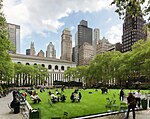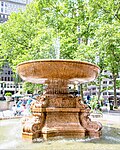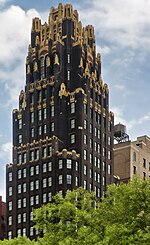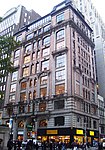New York Crystal Palace
1858 fires19th century in New York CityBryant Park buildingsBuilding collapses caused by fireBuilding collapses in the United States ... and 9 more
Building fires in New York CityBurned buildings and structures in the United StatesCommercial building firesCommercial buildings completed in 1853Demolished buildings and structures in ManhattanEvent venues in ManhattanUse mdy dates from November 2021World's fair architecture in New York CityWorld's fairs in New York City

New York Crystal Palace was an exhibition building constructed for the Exhibition of the Industry of All Nations in New York City in 1853, which was under the presidency of the mayor Jacob Aaron Westervelt. The building stood in Reservoir Square.
Excerpt from the Wikipedia article New York Crystal Palace (License: CC BY-SA 3.0, Authors, Images).New York Crystal Palace
West 40th Street, New York Manhattan
Geographical coordinates (GPS) Address Website Nearby Places Show on map
Geographical coordinates (GPS)
| Latitude | Longitude |
|---|---|
| N 40.753611111111 ° | E -73.983888888889 ° |
Address
Bryant Park
West 40th Street
10018 New York, Manhattan
New York, United States
Open on Google Maps











